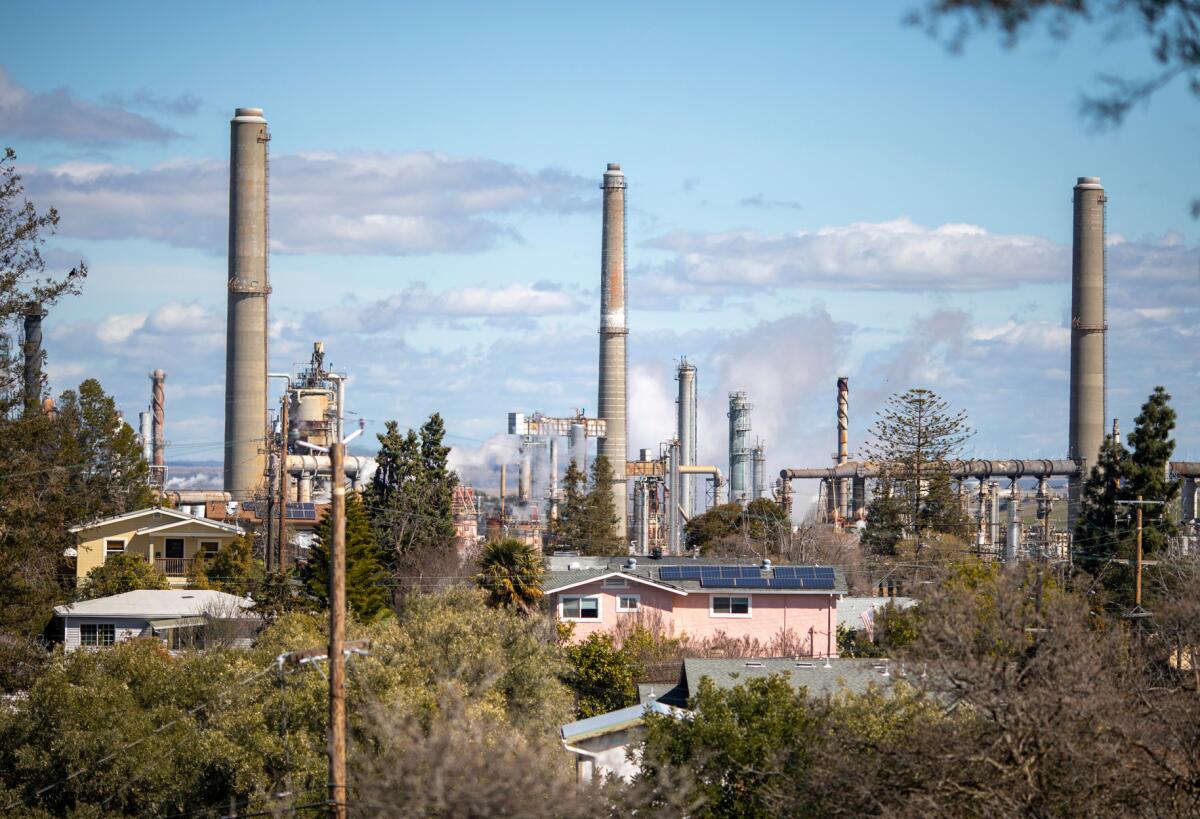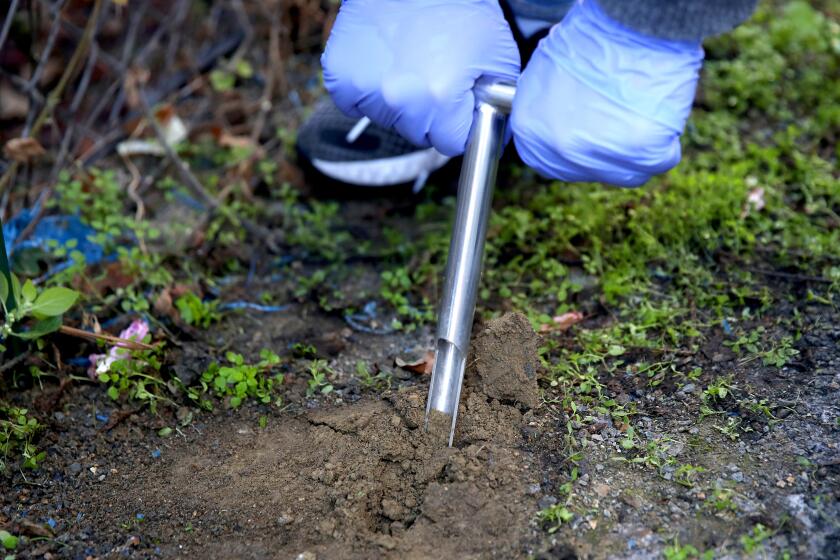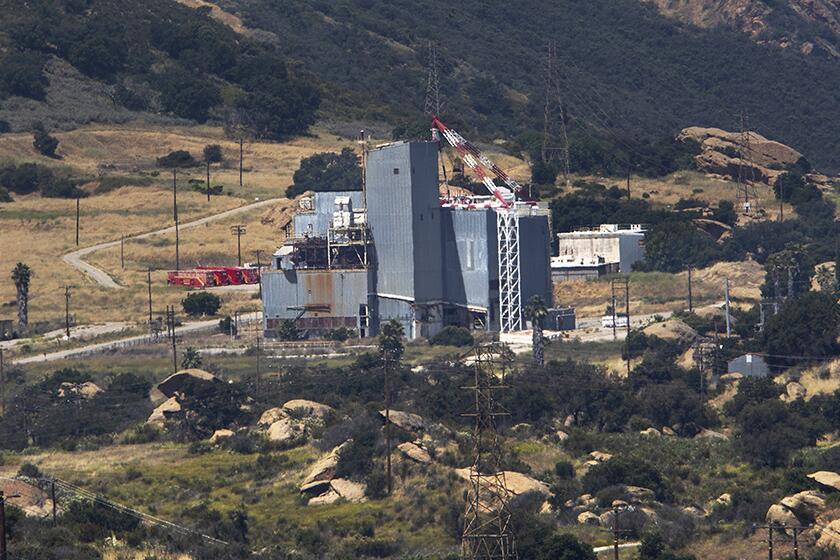A Bay Area city reels from refinery’s hazardous fallout. Did warnings come too late?

It was the morning after Thanksgiving when residents in the Bay Area city of Martinez awoke to find their homes, cars and yards blanketed by a mysterious pale residue.
Although the dusting resembled ash, there were no wildfires nearby. When residents called local authorities, they learned nothing.
Five days later, the Contra Costa County Health Department published a press release informing residents that the “powdery substance” was a hazardous material released by Martinez Refining Co. on the northern edge of the city. Residents were told to contact health providers if they were experiencing coughing or difficulty breathing.
But then, a month after the incident, the health department recommended not eating food grown in soil that was exposed to the material.
Today, residents of this tightknit community 30 miles northeast of San Francisco are still demanding to know what risks they face after 20 tons of spent catalyst were lofted over area homes, and why it’s been so hard to get answers.

California’s biggest environmental cleanup leaves lead contamination and frustration
Numerous homes that underwent remediation have been left with lead concentrations in excess of state health standards, according to USC researchers.
While the county has launched an investigation into why the refinery failed to issue an alert, residents have accused county health officials of failing to properly inform residents of potential health hazards long after the incident. They say that an initial Jan. 11 health notice was seen by too few people, and that it wasn’t until a second notice was issued March 7 that people realized they shouldn’t be eating fruit from their trees or vegetables from their garden.
“Not only have I been feeding that to my husband, my son and myself, but also to my 90-year-old mother,” said Penny Bristow-Wendt, who lives a mile south of the refinery. “Why weren’t we notified sooner?”
Test samples of the residue revealed such metals as aluminum, barium, chromium, nickel, vanadium and zinc. The testing, however, didn’t distinguish which types of chromium were detected, which could be an important distinction. Hexavalent chromium, for example, is a potent carcinogen that has no safe amount of exposure while trivalent chromium is considered much less toxic.
County health officials have insisted that the most significant health risks were short-term respiratory effects from inhaling the pollution over the two days it was released, and that serious health problems are generally associated with long-term exposure to high concentrations of the material.
They said their alerts were issued out of an abundance of caution.
“It’s sort of a hard balance because you don’t want to unnecessarily scare people,” said Dr. Ori Tzvieli, the county health officer. “But we also don’t want to falsely reassure people. We want to just say, let’s see what the results say and then we’ll have more information for you then.”
Such statements have done little to placate residents however. Four months after the release, some are demanding that health officials expedite soil sampling to determine just how far the fallout spread.
“The lack of notification is just unconscionable,” resident Christina Reich said during a recent public hearing. “It’s criminal. And we really need to do better and we need to immediately expedite the testing. We need to find out exactly the full extent of what’s going on, how far out these contaminants have gone, and what effect they have.”
Another resident, who identified himself only as Jeffrey, lamented he had been eating eggs laid by his chickens, which he keeps at his home.
“This is horrendously late information to say, ‘Hey, maybe you shouldn’t be eating your vegetables,’ ” he said. “How do we know that [the refinery] is going to have any type of accountability? It just seems like the way of this country is for these corporations to do these horrible, awful things to the public and then they get to just wash their hands of it and walk on and do it again a couple of months later.”
California regulators want to ban a toxic chrome-plating chemical that gives a signature metallic shine to auto parts and other products.
The Bay Area Air Quality Management District is working on a computer model to determine how far contaminants may have spread, which is expected to help focus the county’s soil sampling. Meanwhile, the county has assembled an 11-member oversight committee — made up of residents, government officials and refinery representatives — that has interviewed a firm to conduct a risk assessment that will include a soil analysis.
Once a contractor is selected, soil sampling can begin, according to local officials. The lab results are expected to be published by early to mid-summer, said Lauren Sugayan, assistant city manager and member of the oversight committee.
Still, residents believe they can’t wait that long. Bristow-Wendt, who lived in her house since 1998, began growing vegetables in her backyard as a hobby during the COVID-19 pandemic. However, as grocery prices ballooned with inflation, she said it soon became a necessity.
“It was like, ‘Are you kidding me? $3 for zucchini?’” Bristow-Wendt said. “And I don’t see that changing any time soon.”
Recognizing it would be months to get her soil tested, Bristow-Wendt took it upon herself to test it. She contacted the company that performed the initial sampling of the metal-laden dust for the health department and air district and found that soil in her garden contained elevated levels of aluminum.
Martinez residents have long had a fraught relationship with the refinery, which produces gasoline, asphalt products, and jet and diesel fuels. In October 2021, the refinery’s previous owner, Shell Oil Products USA, agreed to pay $433,000 to settle 44 notices of violation issued to the company for noncompliance with air quality regulations in 2017, 2018 and 2019.
Martinez Refining purchased the refinery from Shell in 2020.
According to officials, problems began four days before Thanksgiving, when the refinery experienced an “upset unit,” a malfunction that caused workers to pause operations. As refining ceased, they turned off emissions control mechanisms that lessen the amount of particles released from smokestacks.
When workers restarted operations, however, the emissions controls were not turned back on. Around 9:30 p.m. Thanksgiving night, the smokestacks began releasing spent catalyst, which results from the breaking down of crude oil.
In the wake of the release, the air district has issued a violation for public nuisance while the county health department has referred two violations to the Contra County district attorney’s office — one for failure to notify the proper authorities of a hazardous material release and one for illicit discharges into the county stormwater system. The district attorney’s office is reviewing the matter and will decide whether to file charges in the coming months, spokesperson Ted Asregadoo said.
A Martinez Refining spokesperson said the company is cooperating with all government agencies and investigations surrounding the Nov. 24 release. “While this incident is still under investigation, we have no further comment at this time,” they said.
In addition to bordering homes, the refinery is roughly 1,000 feet north of a drinking water reservoir that serves the city. County officials say treated water is safe and has continued to meet federal drinking water standards. Any heavy metals in raw water, they say, are removed by treatment processes.
Researchers theorize that a widely used degreasing chemical -- found in the soil near some residential areas -- may be linked to Parkinson’s disease.
As residents press officials for answers, they have also questioned the county and city’s methods of communication. Carlota Canari, who lives less than half a mile south of the refinery with her husband and three sons, wonders why the recommendation about refraining from eating produce from local gardens wasn’t communicated through the community’s emergency alert system.
“How many people have already consumed the oranges or lemons and who knows what else they consume at this time of the year? Or what if they grow vegetables? Asparagus, broccoli — you name it. I don’t know. There’s no answers.”
Sugayan, the Martinez assistant city manager, said the city is communicating through an emailed newsletter, its website and social media. And soon, residents will be getting mailed updates on community meetings, which will be included with the water bill.
However, perhaps the greatest predicament facing public officials is that conclusive evidence of any contamination is still months away.
“We want nothing more than to reduce fear and anxiety with answers,” Sugayan said. “But, as the health department has said, you have to follow the science. I understand it’s really tough for the public, but we’re doing everything we can to host community meetings, to agendize this and give verbal updates.”









